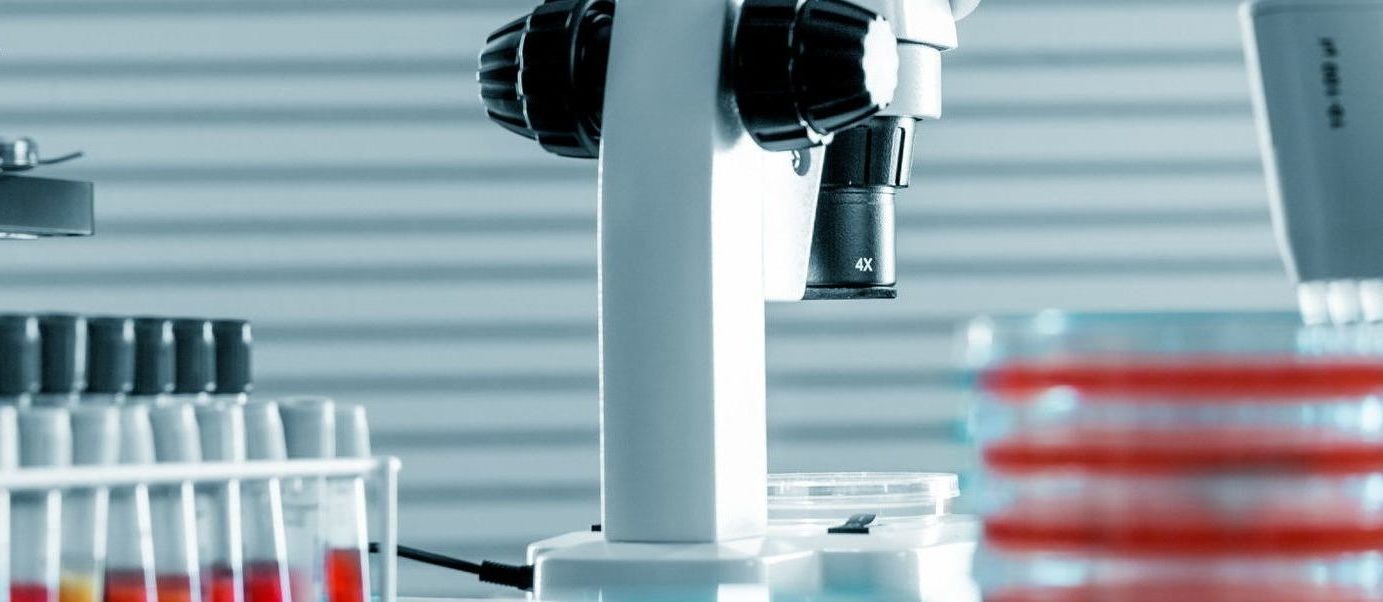What does the acronym PCR mean?
PCR stands for polymerase chain reaction and is a technique for amplifying a specific region of an organism’s DNA or RNA. The amplified region is defined by a set of two “primers” at which DNA synthesis is initiated by a thermostable DNA polymerase. The amount of target DNA needed is very small and at least a million-fold increase of a specific section of a DNA molecule can be realized. The PCR product can be detected either by agarose gel electrophoresis (conventional PCR) or in “real time” by the use of fluorescently labelled probes (qPCR)
What is qPCR?
qPCR is quantitative real time PCR and is considered the method of choice for diagnostic PCR. It is capable of quantifying the amount of a specific viral, bacterial or host origin DNA or RNA present in a sample. qPCR is particularly useful in situations for example where an organism is difficult to culture or identify by other methods, in early infection before an immune response is detectable or where a rapid result is required.
What is a multiplex qPCR
Multiplex qPCR allows the simultaneous detection of multiple target DNA (eg from different organisms) in a single reaction. All our qPCR assays include an internal control primer and probe set and so are duplexes. Others, such as the feline respiratory syndrome qPCR assay, detect two or more target DNAs as well as the internal control.
How sensitive and specific is PCR testing?
qPCR is extremely sensitive and specific and has the potential to detect organisms at very low numbers in a sample. The sensitivity of qPCR has allowed screening for BVDV in a herd using a single test on pooled serum samples or a bulk milk sample.
The capacity of PCR to amplify extremely small amounts of DNA also increases the chance of false positive results arising from cross-contamination. To ensure that this does not occur it is an essential requirement of any laboratory undertaking PCR that the three PCR stages (setting up the PCR reagents, extraction of nucleic acids from the sample and running of the PCR) are carried out in three separate self-contained laboratories with appropriately controlled air flow.
What samples types are suitable for testing by qPCR?
It is important to select the sample type appropriate to the organism being tested and preferable to transport the samples chilled. Please refer to the sample requirements specified for the individual qPCR assays offered.
What is an internal (amplification) control?
An internal (amplification) control (IC) is a target DNA or RNA that is amplified simultaneously with the pathogen nucleic acid. The IC can be a host gene or an artificial DNA/RNA molecule added to each sample at the DNA extraction stage. It demonstrates that amplifiable DNA is present in the reaction. The inclusion of an IC in a qPCR reaction helps identify false negative results associated with a particular sample, sample collection, submission or laboratory processing.
What is a threshold cycle (ct) value?
The threshold cycle (ct) value is the number of cycles of PCR required for the amount of PCR product (measured by fluorescence) to cross a defined threshold value. The ct value thus gives a measure of the amount of target DNA present in a sample; thus, if the amount of target DNA present is high the threshold is reached sooner resulting in a lower ct value. Generally ct values are not included in the results.
Will qPCR replace conventional antibody diagnostic tests?
No, the qPCR test directly detects the presence of a target organism’s genetic material in a sample. The qPCR test is independent of the host’s immune response. However, there are situations where antibody determination will remain the preferred diagnostic method. That said, qPCR is rapidly becoming more common as the diagnostic method of choice for infectious diseases.
What benefits does qPCR bring to the diagnostic process?
QPCR is highly sensitive and specific, has a rapid turnaround time and can be automated. The “closed tube” system used in qPCR significantly reduces the potential for false positive results. Multiplexing of qPCR tests is also possible, allowing several tests for different organisms to be performed on a single sample at the same time. QPCR is especially useful in situations where isolation and identification of an organism presents difficulties.
Can serotypes or strains of an organism be identified?
A qPCR can be designed to distinguish between serotypes and strains of an organism where the nucleotide sequences of these are known. A PCR assay can also be designed to distinguish between vaccine and field strains of an organism.
If you have any questions, or would like any further information, please contact us.

